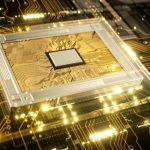Demand for faster and more robust networking in AI-driven data centres is intensifying as workloads exceed the capacity of single facilities. Companies are seeking advanced solutions that ensure seamless connections and prevent interruptions in AI training operations. Cisco has stepped into this escalating market by introducing hardware tailored for distributed AI infrastructure, signaling a shift in how data centre connectivity is approached. Many industry observers anticipate ongoing technical progress and heightened competition driven by the limitations of traditional routers.
Earlier news about data centre interconnects largely highlighted Broadcom’s efforts with its Jericho 4 chip and Nvidia’s Spectrum-XGS initiative, but neither provided a complete view of the technical and commercial deployment details. Those announcements suggested a gradual industry move from scaling within a single site to interlinking multiple locations for AI workloads. Cisco’s latest announcement emphasizes programmability, deep packet buffering, and energy efficiency, which were only hinted at in past coverage focusing mainly on raw bandwidth. The entry of new players has prompted existing vendors to clarify the practical applications and market reception of their offerings, deepening customer focus on ecosystem and software compatibility alongside hardware capabilities.
How does Cisco’s 8223 router differ from traditional options?
Cisco’s 8223 routing system is engineered specifically for linking distributed AI workloads across data centres, distinguished by its use of the Silicon One P200 chip. Designed to process over 20 billion packets per second and support high-density 800-gigabit connections, the device integrates deep buffering to handle shifts in data traffic generated during AI model training and inference. The move to implement “switch-like power efficiency” in a high-capacity router highlights Cisco’s focus on minimizing energy demand while meeting the needs of AI-focused facilities. This combination responds to increasing reports from operators about power and bandwidth shortfalls.
Which companies are deploying this technology and why?
Major cloud providers such as Microsoft and Alibaba Cloud have taken steps to integrate the P200 platform into their respective networks. Microsoft’s Dave Maltz said,
“The common ASIC architecture has made it easier for us to expand from our initial use cases to multiple roles in DC, WAN, and AI/ML environments.”
Alibaba Cloud’s network chief, Dennis Cai, commented,
“[The chip] will enable us to extend into the Core network, replacing traditional chassis-based routers with a cluster of P200-powered devices.”
Their adoption suggests practical value in programmability, scalability, and energy savings as workload demands break through previous boundaries in individual data centres.
How does Cisco address flexibility, security, and competitive challenges?
By supporting new protocols through software updates on programmable silicon, the 8223 system offers adaptability that traditional fixed-function routers can’t easily match. Security is addressed by implementing line-rate encryption with algorithms intended to withstand future quantum computing advances and by integrating telemetry for granular network monitoring. These features, together with varied deployment options—spanning modular system compatibility and SONiC support—are positioned to attract customers wary of proprietary lock-in. Cisco’s established presence and established user base, especially with the Silicon One range since 2019, reinforce its credibility in a field crowded by competitors like Broadcom and Nvidia.
A shift toward distributing AI workloads across multiple data centres introduces new pressures on both network performance and management. While Cisco’s 8223 system squares off against previous industry launches by Broadcom and Nvidia, the focus on software ecosystems and integration with hyperscaler needs sets this device apart. The ongoing contest to address power use, flexibility, upgradability, and emerging AI workload patterns reflects a market evolving from simple speed-focused solutions to those optimized for dynamic, large-scale deployments. Decision-makers in data centre operations are likely to weigh not just hardware metrics but also long-term adaptability, ecosystem support, and cost efficiency as networks become more complex and geographically dispersed.
Businesses considering new AI infrastructure will benefit from evaluating programmable and energy-efficient routing platforms that mitigate power and cooling limits while enabling secure interconnects over long distances. Tracking vendor approaches to ecosystem partnerships and software integration is particularly important, since the market’s direction remains uncertain. As industry requirements evolve and competitive pressures mount, the success of solutions like Cisco’s 8223 will hinge on their capacity to scale, adapt quickly to new protocols, and fit within broader operational strategies. Decision-making should balance near-term bandwidth and efficiency gains against the capital commitment and future-proofing of chosen network technologies.
- Cisco launches 8223 router aimed at connecting distributed AI workloads.
- Microsoft and Alibaba Cloud announce adoption of Cisco’s programmable P200 chip.
- Programmability and power efficiency emerge as key data centre networking concerns.










